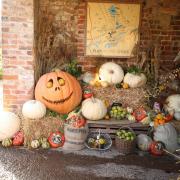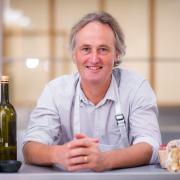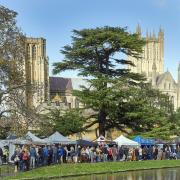Sauvignon Blanc
Highly aromatic, tangy, citrus, sharp, gooseberry, grassy, clear, clean and refreshing.
Its home was the Loire in northern France.
Sancerre, and the little village just over the river, Pouilly sur Loire, where the wine is known as Pouilly Fume, (and has nothing whatsoever to do with Pouilly-Fuisse, a wine produced in Macon) are the best known.
Now however, Marlborough, a region in the north of South Island, New Zealand, has become the favourite in England.
Riesling
A lot of people in this country think of Riesling as being that dreadful sugar water the Germans foisted on us in the 1970s and 1980s, which probably killed half the fish in the Rhine and Mosel.
We have also endured cheap, nasty wine from Eastern Europe with Riesling or more often Rizling (sic) on the label, which bears no resemblance to a wine made with a good Riesling grapes, and should be used to get oil off the floor of garages.
Chardonnay
About 10 years ago Chardonnay was the wine that walked off the shelves, the most popular grape by far.
Now it’s Sauvignon or Pinot Grigio that are the most popular, certainly in England.
I think part of the problem as far as Chardonnay is concerned is that it is so versatile.
The other problem that Chardonnay has is that so much has been produced around the world, some of it terrible, that people just don’t trust it, but just be selective.
Gewürztraminer
A few weeks ago I read in The Daily Mail an article saying that the English don’t experiment with enough different wines and went on to advise Gerwurztraminer and Viognier as wines to try.
Just a minute, much as I love these wines with certain foods the spicy, floral, musky perfumed Gerwurztraminer is not a wine to drink with your Sunday roast chicken, or cod and chips, it will ruin them. Certain pâtés or cheeses, yes it can be great, but to just recommend a wine without any explanation is not fair.
Pinot Gris / Pinot Grigio
This is the same grape but can be so different. It started in Alsace which still produces some excellent examples as does Oregon, British Columbia, New Zealand, Australia and Italy, where it is known as Pinot Grigio.
Italy has a problem though in as much as it can produce good crisp, dry white wines but far too often it falls back into the habits that have bedevilled their wine industry for so long. Over production.
Shiraz/Syrah
Syrah as the French call it is the progeny of Duresa and Mondeuse blanc and its home is the Rhone valley. In the northern Rhone it is used as a single varietal in Cote-Rotie and others while in the south it is mixed with Grenache and other grapes to make such wines as Chateauneuf-du-Pape,
The French rarely put the name of the grape on the bottle and so 20 years ago very few people had heard of it. Then the Australian wine revolution got into gear and Shiraz as they called the grape was plastered all over the front of the bottles.
Cabernet Sauvignon
Lots of blackcurrant flavour, high in tannin, from tiny dark blue grapes, with thick skins. It needs lots of sun, and is a late ripener, nevertheless it is responsible for more of the great wines of the world than any other grape.
Chateaux Margaux, Lafite Rothschild, Latour , infact virtually all the wines produced on the left bank in Bordeaux are more than 50 per cent Cabernet Sauvignon.
Merlot
Merlot has gone from being the poor relation (to Cab.Sav.) to now being the most widely planted grape in Bordeaux.
Plump, soft, plummy, thin skins, easier to grow, and an earlier ripener, softer and rounder it actually softens Cab. Sav. and means the wines can be drunk earlier.
On the right bank it comes into its own in St-Emilion and of course Ch. Petrus,in Pomerol, one of the most expensive wines in the world is made from 100 per cent Merlot.
In other parts of the world it is used as both a blending partner, and as a single varietal.
Grenache Noir
The most important grape in Chateauneuf du Pape and indeed most of the southern Rhone, high in alcohol, rich, spicy, lots of tannin it needs hot dry conditions, like the south of France, or Spain where it is known as Garnacha.
It is nearly always blended, and is the better for it, except in Priorat (see April Somerset Life) where it really comes into its own and produces stunning wines
Peter Hadlow is the main wine buyer at The Cellar Bar in Clevedon and has travelled extensively evaluating wines.



























